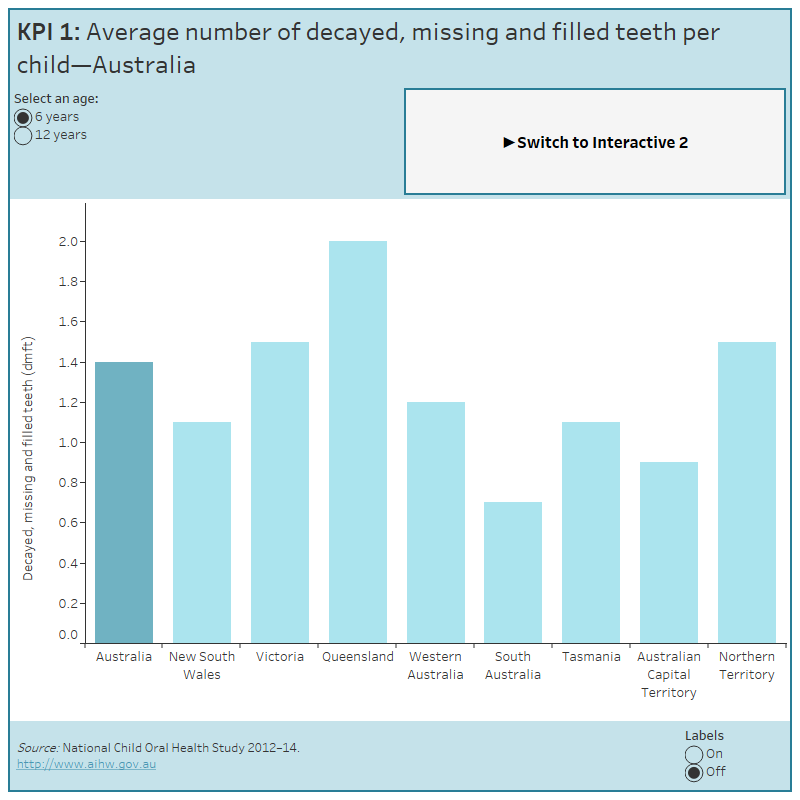Caries experience in children
KPI 1: Average number of decayed, missing and filled primary and permanent teeth per child, in children aged 6 and 12 years
The dmft and DMFT score counts the number of teeth that are decayed (d), missing due to caries (m) or filled because of caries (f)—‘dmft’ refers to primary teeth, ‘DMFT’ refers to permanent teeth. When a person has a dmft or DMFT score that is greater than zero, this is known as having caries experience.
In Australia, national survey data shows that children aged 6 years have an average of 1.4 dmft, while children aged 12 years have an average of 0.7 DMFT.
The dmft score varied across Australia for children aged 6 years, from 2.0 dmft in Queensland to 0.7 dmft in South Australia. Similarly, the DMFT score for children aged 12 years varied from 1.1 DMFT in Queensland to 0.3 DMFT in the Australian Capital Territory.
Explore the data using the interactive below:
KPI 1 Interactive 1: Average number of decayed, missing and filled teeth per child—Australia
This figure shows the average number of decayed, missing and filled teeth per child in 2012-14. National, state and territory averages are presented for children aged 6 years and 12 years. In Australia, national survey data shows that children aged 6 years have an average of 1.4 decayed, missing and filled primary teeth, while children aged 12 years have an average of 0.7 decayed, missing and filled permanent teeth.
KPI 1 Interactive 2: Average number of decayed, missing and filled teeth per child—Public dental clients
This figure shows the average number of decayed, missing and filled teeth per child, for public dental clients, by state and territory, for children aged 6 years and 12 years, between 2014-15 and 2017-18.

Data tables available for download.
More information about the health of children’s teeth.
|
Definition |
Mean number of decayed, missing and filled primary and permanent teeth per child, in children aged 6 and 12 years Numerator Denominator |
|---|---|
|
Desirable rate |
Low |
|
Data sources |
Public dental NCOHS *National population estimates presented in COHS have been derived from weighted data |
|
Inclusions |
Age group Decayed teeth dt: Number of decayed deciduous/primary teeth Missing teeth (mt + MT)(1) mt: Number of missing deciduous/primary teeth Filled teeth ft: Number of filled deciduous/primary teeth |
|
Exclusions |
Missing teeth(1) Filled teeth(1) Duplicate cases |
- Adapted from World Health Organisation (WHO) Oral health surveys – basic methods, 5th edition, 2013.


